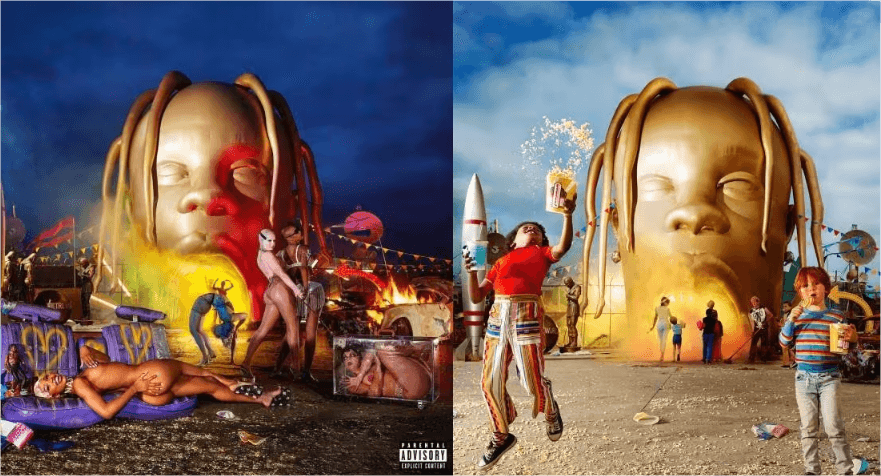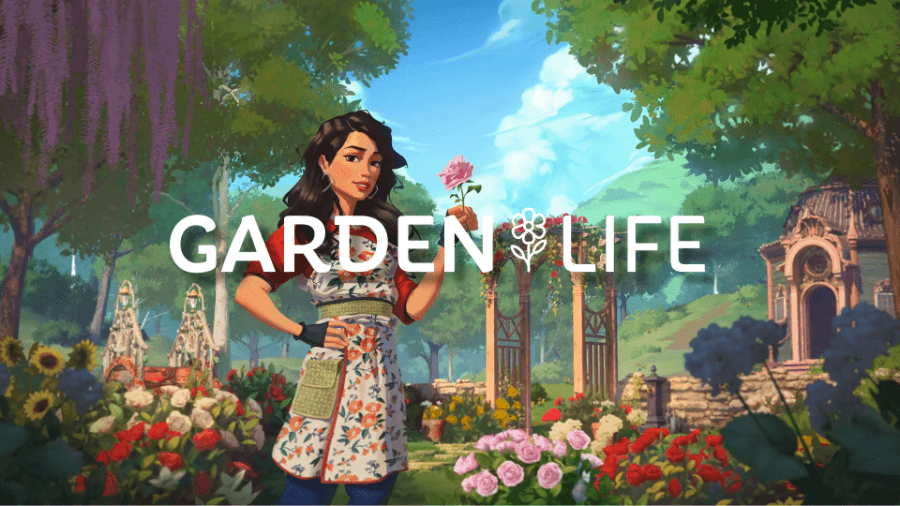📑Table of Contents:
- What is the Astroworld Album Cover?
- Who Designed the Astroworld Album Cover?
- The Symbolism Behind the Astroworld Album Cover
- The Impact of the Astroworld Album Cover
- Alternate Versions and Edits of the Cover
- The Role of David LaChapelle
- Hidden Details Fans Noticed
- Public and Critical Reaction
- Merch, Marketing, and Visual Branding
- Controversy or Censorship (if any)
- Conclusion

Travis Scott’s Astroworld album is a landmark in modern hip-hop, blending elements of rap, trap, and psychedelic music. Released in 2018, the album has received critical acclaim for its experimental sound and its ability to push the boundaries of hip-hop. However, aside from its musical genius, Astroworld is also known for its striking album cover, which has captured the attention of both fans and critics alike.
In this blog post, we’ll explore the story behind the Astroworld album cover, the artist responsible for it, and the deeper meaning behind the imagery.
What is the Astroworld Album Cover?
The album cover for Astroworld is a surreal and striking image that perfectly encapsulates the album’s themes. It features a giant golden inflatable sculpture of a smiling head with an open mouth, set against the backdrop of a bright blue sky and fluffy clouds. The sculpture resembles an amusement park ride, with the mouth of the head forming a tunnel or entrance. This whimsical and unexpected image immediately draws the viewer’s attention, creating a sense of wonder and curiosity.
What makes the cover particularly unique is its juxtaposition of the fantastical and the real. The giant inflatable head is both playful and menacing, evoking a sense of childhood nostalgia while also evoking a sense of unease. It is a representation of Astroworld itself—an album that blends nostalgia with modern chaos, offering both lighthearted moments and darker, introspective themes.
Who Designed the Astroworld Album Cover?
The Astroworld album cover was designed by renowned artist David LaChapelle, known for his surreal and hyper-realistic photography. LaChapelle’s work often features vivid colors, larger-than-life imagery, and a blend of humor and dark commentary. His artistic style was a perfect fit for Travis Scott’s vision for the album cover.
Travis Scott, who is deeply involved in the artistic direction of his projects, wanted the cover to reflect the album’s themes of nostalgia and escapism. The Astroworld concept is inspired by the now-defunct Six Flags Astroworld amusement park in Houston, Texas, which Travis frequently visited as a child. For Travis, the album cover symbolizes a return to a simpler, more carefree time, while also acknowledging the darker, more complex aspects of his life and career.
The decision to work with LaChapelle was a natural one, as both Travis and the artist share a vision of blending the fantastical with the real, often creating work that pushes boundaries. LaChapelle’s background in fashion, photography, and visual art allowed him to bring Travis’s bold idea to life in a way that was both artistic and commercially appealing.
The Symbolism Behind the Astroworld Album Cover
The Astroworld album cover is rich in symbolism that directly ties to the album’s themes. Here’s a deeper look at some of the most notable aspects of the artwork:
1. The Inflatable Head: A Symbol of Nostalgia
The giant inflatable head is a direct reference to the Astroworld amusement park that once stood in Houston. The park, which closed in 2005, was a place of joy, adventure, and childhood memories for many, including Travis Scott. The head on the cover represents the idea of revisiting those carefree moments from childhood—an escape into a world of fun and excitement. However, the surreal scale of the inflatable also conveys the sense that those memories are distant and somewhat out of reach.
2. The Mouth as an Entrance: Entering a New World
The mouth of the giant head serves as an entrance to the amusement park, creating a visual metaphor for entering a new world. This idea of “entering” is central to the album’s themes of transformation and exploration. Travis Scott has always been known for pushing the boundaries of his music and his persona, and the cover art reflects that desire to transport listeners into a different realm. The entrance is both literal and symbolic, suggesting that Astroworld is a journey—a deep dive into Travis’s mind and experiences.
3. The Sky and Clouds: Dreamlike and Surreal
The bright blue sky and fluffy clouds in the background create a dreamlike, surreal quality. They evoke a sense of escape and fantasy, reinforcing the album’s focus on a dream world that both embraces and challenges reality. The sky serves as a metaphor for the limitless possibilities in life, while also hinting at the disconnection between the past and the present, as if this world exists in a place that is both familiar and foreign.
4. The Theme of Childhood vs. Adult Reality
The Astroworld cover art perfectly represents the contrast between childhood innocence and adult complexity. The inflatable head may seem lighthearted, evoking memories of amusement parks and carefree days, but the darker undertones of the imagery point to the challenges and struggles that come with adulthood. It reflects Travis Scott’s journey from a child in Houston dreaming big to a global superstar navigating fame, responsibility, and personal growth.
The Impact of the Astroworld Album Cover
The Astroworld album cover quickly became iconic, cementing itself as one of the most memorable and talked-about images in hip-hop history. The giant inflatable head became a symbol of both the album and Travis Scott’s brand, showing off his ability to create memorable, visually striking art.
The cover’s popularity extended beyond music fans and into mainstream culture. The imagery inspired countless memes, merchandise, and even an Astroworld tour theme park experience, where fans could physically walk through an inflatable version of the head at concerts. The album’s cover art played a crucial role in building the mystique and allure surrounding the Astroworld project, adding to the sense of wonder and excitement that Travis Scott wanted to evoke.
The cover also sparked discussion about the role of visual art in the music industry. In a time when album art is often overlooked or minimized, Astroworld reminded everyone of the importance of visuals in creating a complete artistic experience. The album cover is as much a part of the album’s identity as the music itself, and its ability to capture the record’s themes visually helped solidify its place in pop culture.
Alternate Versions and Edits of the Cover
The Astroworld album cover was released in two versions, one during the day and one at night. The daytime version features a carnival-like setting filled with children and families enjoying a surreal, dreamlike atmosphere. In contrast, the nighttime version glows with neon lights and a darker, wilder energy. Strippers, flames, and surreal elements replace the playful daytime imagery. The two covers represent different sides of the Astroworld experience—innocent wonder versus chaotic indulgence. Fans were quick to notice the mood shift and debated which version captured the album’s essence better. Each version tells a different story but remains rooted in the same fantasy world.
The Role of David LaChapelle
The visionary behind the Astroworld cover is David LaChapelle, a photographer known for surreal and hyper-stylized imagery. LaChapelle has worked with pop icons like Lady Gaga, Kanye West, and Britney Spears. His work is bold, colorful, and always filled with symbolism. For Astroworld, he created a theme park fantasy that perfectly matched Travis Scott’s psychedelic sound. His ability to blend reality with fantasy made the cover feel both playful and unsettling. Every detail, from lighting to character placement, reflects LaChapelle’s unique creative lens. His vision turned an album cover into an immersive, visual experience.
Hidden Details Fans Noticed
Fans immediately started analyzing every part of the Astroworld cover. They noticed robots, clowns, dancers, and strange masked characters scattered in the scene. Some believe these figures represent parts of Travis Scott’s mind or career. The golden inflatable head of Travis stands at the center like a deity or mascot. Children gather at the entrance, symbolizing innocence and wonder. Behind them, the scene grows darker and more chaotic. Flames, fog, and strange props add layers of meaning. Even the clouds and color tones were dissected by fans for deeper symbolism. The cover feels like a puzzle filled with personal and artistic secrets.
Public and Critical Reaction
The Astroworld cover was praised instantly by fans and critics alike. Many called it one of the best covers of the decade. Social media lit up with praise, memes, and detailed breakdowns. Critics admired how well the visual matched the music’s tone. Blogs and magazines analyzed the cover’s surreal elements and bold composition. Art lovers appreciated the nod to classic, storytelling-style album covers from hip-hop’s golden age. The cover wasn’t just a backdrop—it was a part of the album’s identity. It helped define Astroworld as a cultural moment, not just a release.
Merch, Marketing, and Visual Branding
The cover’s imagery heavily influenced the album’s marketing and merchandise. Travis Scott launched a line of hoodies, shirts, and posters using the artwork. The golden inflatable head became a recurring symbol on stage and in tour visuals. Pop-up shops reflected the same carnival chaos seen in the cover. Fans could immerse themselves in the Astroworld world through branded items and live experiences. Even the tour featured roller coasters and giant inflatables inspired by the artwork. The branding was cohesive, creative, and highly visual. The cover art became more than packaging—it became the blueprint for the entire Astroworld era.
Controversy or Censorship (if any)
The nighttime version of the cover originally included a transgender model who was later edited out. This change sparked backlash and debates about censorship and representation. Many fans and media outlets criticized the decision as insensitive. LaChapelle stated the edit was a creative choice and not meant to offend. However, the controversy highlighted the complexities of editing public art. Travis Scott received some criticism but didn’t make a direct statement about the edit. The incident added tension to the album’s otherwise successful rollout. It also reminded fans that even artistic visuals can carry social and political weight.

Conclusion
The Astroworld album cover is more than just a piece of artwork—it’s a visual representation of Travis Scott’s artistic vision, blending nostalgia, surrealism, and personal reflection. Through its bold and imaginative imagery, the cover captures the essence of the album, inviting listeners to escape into a world of wonder, transformation, and self-exploration.
Created by the talented David LaChapelle, the artwork has become iconic, forever tying Travis Scott’s Astroworld to the collective memory of hip-hop culture. It’s an example of how visuals can elevate music, turning an album into an immersive, multi-sensory experience.





